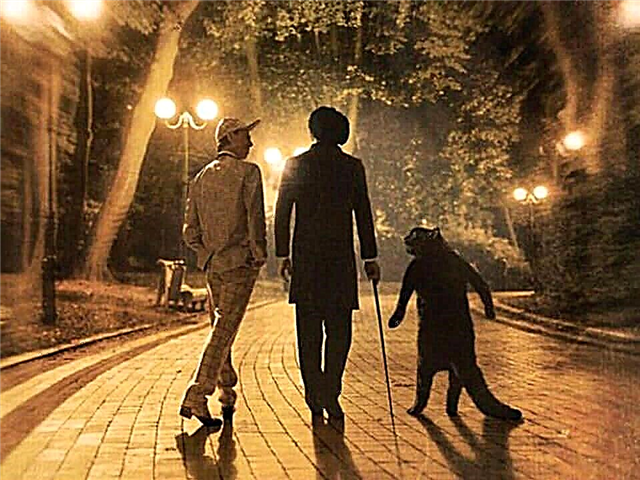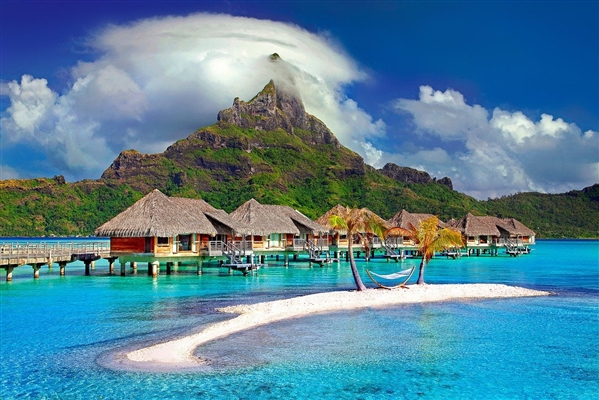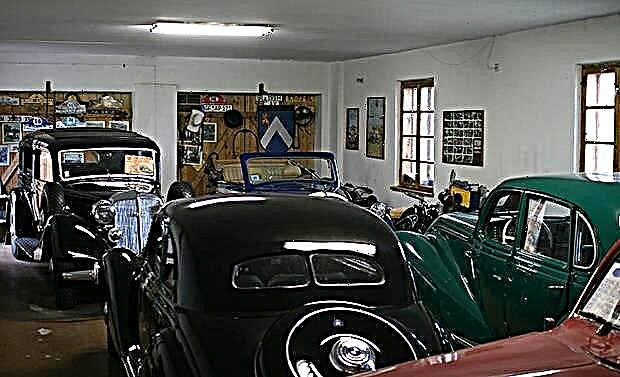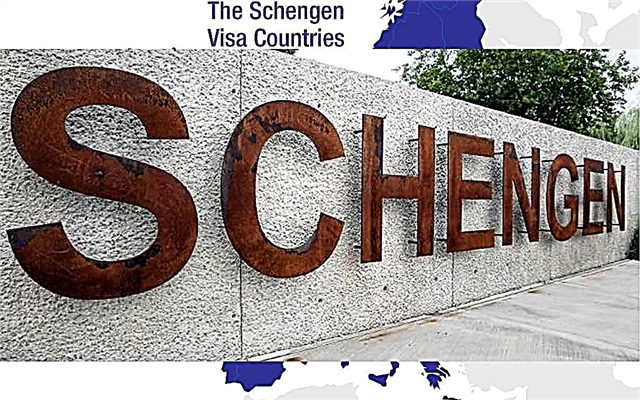Address: France, city of Carcassonne, right bank of the Aude river
Number of towers: 52
The length of the fortress walls: about 3 km.
Main attractions: Narbonne Gate, Comtal Castle, Inquisition Museum, Basilica of Saints Nazarius and Celsius
Coordinates: 43 ° 12′24 ″ N, 2 ° 21′49 ″ E
Content:
Short description
A traveler who comes to France to see and capture in a photo a huge number of attractions of this amazing and truly beautiful country, according to experienced tourists, should definitely see the Carcassonne fortress.
The small commune of Carcassonne with its majestic fortification of the same name is located just 80 kilometers from Toulouse and is included not only in the legendary UNESCO World Heritage List, but also recognized as one of the most frequently visited attractions in France.

Carcassonne Fortress from a bird's eye view
By the way, in many guidebooks and tourist brochures Carcassonne is listed as a castle. To be very frank, the giant Carcassonne castle resembles only externally, and even then only some parts of this structure. Whatever the tour operators write, the architectural ensemble, which from the outside resembles a medieval city, is, first of all, an impregnable fortress, spread out on one of the banks of the picturesque river called Aude. Only the length of the fortress walls, which reliably protected the inhabitants of Carcassonne, is more than three (!) Kilometers. Naturally, this is not the Great Wall of China, but the length of the high walls of three kilometers made the enemies think and weigh everything well, and then decide to storm Carcassonne.
Numerous tourists who have come to the French commune, located in the department of Aude, can be found even on the outskirts of the fortress itself. In various places, you can constantly stumble upon small groups, in which representatives from the Land of the Rising Sun are sure to be present. It's no secret that the Japanese, despite their interesting history and a huge number of attractions, are connoisseurs of all the castles of the Old World without exception. Why exactly the Japanese castles in France, Germany and Switzerland are so delighted, so far remains a mystery.

Panoramic view of the Carcassonne fortress
Naturally, the Carcassonne fortress and its environs are a favorite place not only for Japanese citizens; it attracts almost everyone who came to France not only for new fashion items or high-quality perfumes and cosmetics, but also to get acquainted with its architectural and historical monuments.
Why do the groups gather two, and sometimes three or four kilometers from the Carcassonne fortress? The fact is that it is from this distance that the most amazing photos of the fortress are obtained, looking at which, it often seems that they do not capture a real-life architectural structure, but a whole ghost town from the past. These are not at all pompous epithets, against the background of this French fortress, many historical films are often filmed, because such realistic medieval "scenery" is quite difficult to find anywhere else in Europe. True, the medieval fortress of Carcassonne can only be called a stretch, because the first buildings appeared here long before the arrival of Jesus Christ in our world. However, this is already a story, which should definitely be discussed in the corresponding subsection.

East gate with two towers of the Comtal castle (inner castle) in Carcassonne
Carcassonne - the history and construction of the walled city
According to historical documents that have survived to this day and thanks to archaeological excavations, it is safe to say that the defensive structure and the whole city, reliably hidden behind its walls, were built in the 2nd century BC. By the way, one of the expeditions, which included the most respected archaeologists, proved that on the site of the Carcassonne fortress, there was also an earlier building, which was erected by ancient people... There is evidence that the territory of the fortress city, built by the Romans, was inhabited by the Celts at a certain period of time, who performed their mysterious magical rites there.
Many tourists who come to see Carcassonne are interested in the origin of the name of the fortress. Alas, no official data shedding light on the name of the powerful fortification have been found at the moment. The guides who conduct excursions around the fortress tell only a few legends associated with the name "Carcassonne", two of which look the most believable.

From left to right: eastern gate with two towers, barracks tower, commandant tower of Komtal castle
In one of the documents of the Roman Empire, the fortress in the 20th year BC was listed as "Colony belonging to Julius Carcasso." Another legend says that the wife of a Muslim ruler named Balaak alone was able to keep the fortress from the invasion of the large army of Charlemagne. The commander retreated, and the woman began to play the trumpet, thereby showing the emperor her courage and the inaccessibility of the fortress. The emperor heard this music, and his courtiers whispered: "In Carcassonne they shout and rejoice!" Since then, according to the legend, which has no official confirmation, the fortress was named Carcassonne. By the way, the woman who managed to defeat Charlemagne is immortalized in a sculpture, which can still be admired today in front of the drawbridge.
The Roman Empire fell, and the fortress city was taken by the Visigoths after a long assault. The invaders perfectly understood the importance of this fortified point and in the shortest possible time they partially restored the destroyed fortification by themselves.

Barbican
The Visigoths were not able to hold the city for long, and just a few years later Charlemagne nevertheless captured Carcassonne. After the death of the emperor and the great commander, the fortress, city and adjacent territories became the private property of the great Trancavel dynasty at that time. It was the representatives of this family who made a huge contribution to the expansion of the city and its defensive structures. In the Middle Ages, the city of Carcassonne was often called "the city of the rich." Almost every inhabitant of it had a huge fortune. The prosperity of Carcassonne was associated not with military campaigns and the seizure of nearby lands, but with active trade, which was conducted by local merchants with the East..
The Romans, seeing how the city is flourishing and expanding, decide, by all means, to regain power over it. Pope Innocent III made a fiery speech to the knights and organized a crusade to Carcassonne. "For the true faith!" - with such a motto the armada of soldiers moved towards the fortress.

Narbonne gate
However, Raymond Roger from the Tranquel dynasty, with only a small detachment, managed to defend the fortress for a while, practically repeating the feat of the Muslim king's wife. The betrayal of people close to him, as well as an acute shortage of potable water, did their job: Raymond-Roger Tranquevel surrendered his beloved fortress city to the mercy of the invaders.
Since that time, the descendants of the legendary dynasty tried to return Carcassonne under their influence, but Louis the Saint with his large army fought off their troops from the fortress. After the battle, the monarch decides to strengthen the fortification and orders to build another wall around the old one. Now, if the enemy took the first wall by storm, then he found himself in a deadly trap.The distance between the two fortress walls was small, and to destroy the invaders in this "ditch of death", as Louis the Saint called it, was as easy as shelling pears at the enemy's soldiers and pouring hot resin over them.

View of the Comtal castle in Carcassonne
However, the son of Louis Saint, and this seemed not enough: he carries out a whole range of works and makes Carcassonne one of the most impregnable fortresses in Europe. As is known from the chronicles, the son of Saint Louis went down in history under the name of Philip the Bold. During the "Hundred Years War" the British repeatedly tried to capture the fortified city, but each time they failed.
It is impossible to calculate even approximately how many soldiers said goodbye to life between two fortress walls. Oddly enough, it was after the "Hundred Years War" that Carcassonne falls into decay and is forgotten by powerful rulers. The city, walls and towers are gradually being destroyed as a result of the inexorable passage of time.
Fortress Carcassonne - a new story
Carcassonne gradually collapsed until the beginning of the 19th century, no one lived in the city. Moreover, a special commission in 1806 removed the majestic and impregnable architectural ensemble from the list, which included fortification cities.

Left to right: Tower de la Marquière, Rode Pass, Samson Tower and Avar Mill Tower
An invaluable contribution to the preservation of the fortress and the city and giving them their original appearance was made by the famous journalist and historian Jean-Pierre Cro-Mayerville in the 19th century. It was he who addressed an open letter to the authorities, which spoke of the need to start restoration work on the territory of Carcassonne.
Talking about the history of Carcassonne, one cannot fail to mention the popular writer Prosper Mérimée, who was fortunate enough to occupy the chair of the inspector general responsible for the preservation of the sights of France in the 1800s. The ruins of Carcassonne and its surroundings made a strong impression on the writer. He immediately submitted a report to the relevant service about the beginning of restoration work on the territory of the Carcassonne fortification complex.
The work lasted exactly ten years: as is known in those days, France, after the revolutions and wars, constantly felt a budget deficit, and the restoration, due to a lack of finances, was terminated.

Fortress walls
True, not for long: Jean-Pierre Cro-Mayerville again draws public attention in a number of articles to an architectural and historical monument, and in 1853, Napoleon III himself issued a decree on the complete restoration of Carcassonne. In its original form, the fortress city was restored thanks to the efforts of the talented architect Eugene Viollet-le-Duc... By the way, the sculptures of both Eugene Viollet-le-Duc and Jean-Pierre Cro-Mayerville are currently standing on the territory of the fortress: this is how the grateful French decided to perpetuate the memory of the personalities thanks to which the fortress of Carcassonne is still accessible to tourists from all corners of the globe.
Fortress Carcassonne - tourist information
Today the fortress and city of Carcassonne is a working open-air museum. Tourists can see with their own eyes the very "ditch of death" and imagine what the soldiers experienced when they found themselves in such a terrible trap. Special attention should be paid to ... toilets dating from the Middle Ages. They represent openings at different levels of the building: most likely, those who lived on the lower floors often had to receive unexpected "surprises" from their neighbors above.

Amphitheater
After passing the walls of the Carcassonne fortress, you can see the ancient houses of the city and even get into several museums. For the most part, these small museums are located in the castle. There are on display amazing exhibits: a model of the entire fortress, according to which one can “from a bird's eye view” assess its inaccessibility; a model of the castle and even a pipe on which Dama Karkas played. To the question: "Is the Ladies Karkas pipe an original or is it a remake that attracts tourists?", The visitors themselves are invited to answer.
Many tourists admire some of the decorative elements of the interior decoration of the castle, for the most part, these are the same Japanese. By the way, the interior of the Carcassonne castle can be called austere: few fountains, rare stucco moldings, a small number of religious objects, gargoyle sculptures and stained-glass windows in the temple - that's all that medieval townspeople (quite wealthy) needed.
As mentioned above, the whole city is spread beyond the walls of Carcassonne. It belongs to the Middle Ages, which does not prevent the functioning of numerous modern restaurants, bars and souvenir shops there.

Basilica of Saints Nazarius and Celsius
By the way, some souvenirs are made directly at the local smithy. Before you buy an expensive metal souvenir "for memory", you should think several times about how much effort it will take to transport it: the weight of such items, as well as their price, is rather big.
However, one should not assume that it is impossible to buy other souvenirs for relatives and friends on the territory of Carcassonne: in addition to forged products, they are presented in stores in a huge assortment. For French "souvenirs" - the Eiffel Tower made of papier-mâché, fridge magnets and many others, prices in Carcassonne are very reasonable. In the walled city, some shops sell the original version of the board game "Carcassonne", which once gained popularity all over the world. Alas, the rules of the game and its map are only available in French and English. For this reason, you should take more cash with you to the fortress, the entrance across the medieval bridge to its territory, by the way, is paid. The amount is symbolic - only 9 euros.

Tower Saint-Nazaire with gate
It is not necessary to purchase special guides to the fortress, except perhaps as a souvenir: the houses built in the Middle Ages, and in which rich merchants lived, now have signs with signs. It is almost impossible to get lost even on such a huge territory; only a tourist who does not know a single word in English can get lost among houses, restaurants, a castle and shops. There are a lot of people in the Carcassonne fortress every day: according to statistics, this is a fortification, the city and the castle are included in one of the most popular tourist routes. This is clearly shown by the budget of the Languedoc-Roussillon region, which 10% (!) Consists of finances left by guests in Carcassonne.











